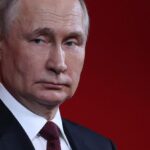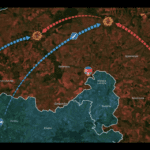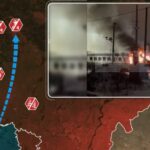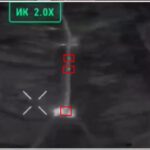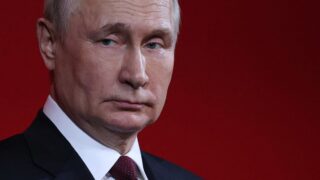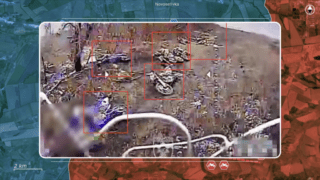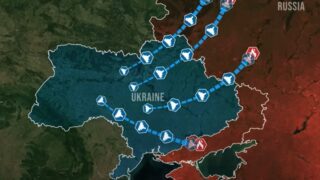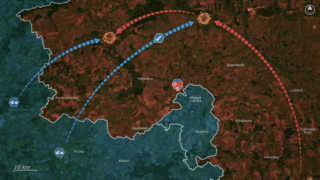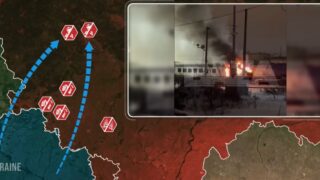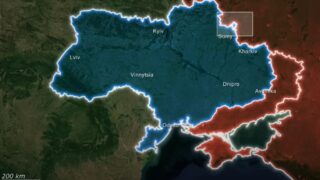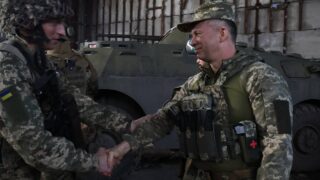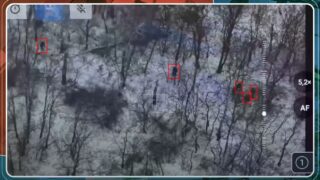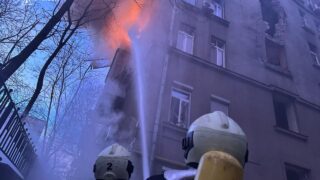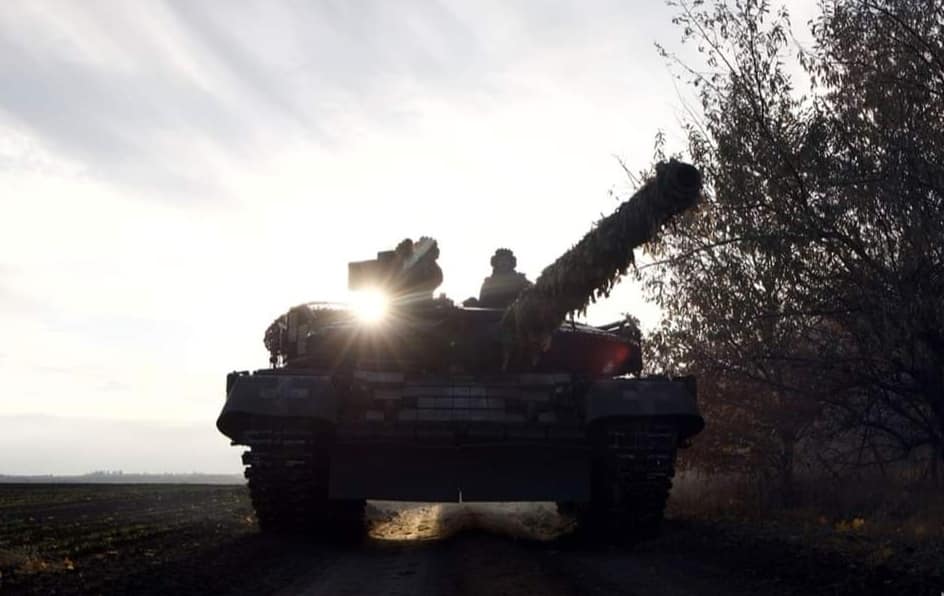
I am confident Russia will lose this year. Here’s why
It is currently fashionable to say that “Ukraine is losing the war.” After following the war closely from the start nearly 11 years ago, first as a former Norwegian Defence Attache and later as a Non-resident Fellow at the Ukrainian think tank Ukrainian Centre for Defence Strategies, I am confident Russia will lose this year.
Ukraine is not losing. That is a surreal idea planted in our heads and has nothing to do with the realities of a war that is being fought in six domains: on land, in the air, at sea, in space, in cyberspace, and not least, in cognitive space. Russia is fighting an unsustainable war on land, a campaign that is slowly evolving to Ukraine’s advantage because of the drone war, Ukraine’s growing long-range strike capacity, and the combined defense industrial potential of Europe and the US. Russia is being defeated in the air, at sea, in space, and cyberspace. Until now, it has only been truly victorious in the cognitive space. Not in Ukraine but in the West.
Russia’s strategic outlook is extremely bleak unless it defeats Ukraine in the Western cognitive space. It desperately needs to convince the US and Europe that Ukraine is doomed unless forced to negotiate on Russian terms.
That’s not to say that the situation along the frontline is not critical. It is. The operational status is, understandably, of great concern. However, from a strategic perspective, the situation is far more nuanced.
On land, at sea, and in the air
Russia’s war in Ukraine is faltering across multiple fronts, revealing deep cracks in its ability to sustain a long-term conflict. Despite some territorial gains, its advances are unsustainable, and Ukraine is turning the tide with innovative strategies and Western support.
On land, Russia’s gains in 2024 amounted to 3,685 km² in Ukraine – minuscule compared to the 74,443 km² liberated by Ukraine in 2022. Even at its current pace (between 18 – 28 km2 per day), Russia would need years and catastrophic human losses to capture the rest of Luhansk, Donetsk, Zaporizhzhia, and Kherson oblasts. With casualty rates hitting a record 1,585 per day in December, Russia’s war of attrition is becoming untenable.
Of a total of 790,800 killed and wounded during nearly 3 years of full-scale war, a staggering 54,4% was lost in 2024. Last year, Russia paid the highest price since the start of the full-scale war. More importantly, last year’s losses are a part of an increasingly more negative trend.
As of 18 December, Russia was assessed to occupy roughly 99% of Luhansk Oblast, 67% of Donetsk Oblast, and 73% of Zaporizhzhia and Kherson oblasts, respectively. At the present rate of advance, Russia will need between 2 and 4 years to occupy the remaining 23,850 km2 of the four oblasts. The speed of advance, however, will likely be less because of the obstacles it faces.
At the present rate of casualties, Russia risks suffering an additional 1,3-2,2 million killed and wounded to capture four oblasts. A staggering 2,1-3 million in total. Russia’s war of aggression is not sustainable, especially knowing that it aims to control nearly all twenty-four oblasts.
In the air, Russia’s once-feared air force has become largely irrelevant. The Russian Air Force has failed to have any decisive operational effect due to the threat posed by Ukraine’s air defenses. Ukrainian long-range strikes have forced Russian combat aircraft to relocate over 300 kilometers from the front, sacrificing operational effectiveness. After Ukraine was allowed to use Western-produced weapons against military targets inside Russia, the number of Russian air strikes and its use of guided glide bombs have declined by up to 75% in some areas.
Meanwhile, Ukraine is integrating advanced Western systems like F-16s, Patriots, NASAMS, and IRIS-T, further eroding Russia’s ambition to establish air supremacy over Ukraine. Simultaneously, an increasing number of Ukrainian long-range strikes have demonstrated serious shortcomings in the Russian air defense network. Ukraine is actively destroying its S-300/400 air defense systems to prepare the battlefield for F-16 and future combined arms operations.
Ukraine has also seized the initiative in the drone war, launching thousands of long-range strikes deep into Russian territory. Ukrainian ingenuity includes the development of a long-range strike capability, including new drone-missiles (Palianytsia, Ruta, and Peklo), Trembita cruise missiles and drones; the experimentation of drone swarms; development of drones as interceptors to counter Russian drone attacks; the development of drone motherships carrying lightweight attack FPV drones at over 70 km deep; the ability to down Russian helicopters with drones; to shoot down Russian helicopters with R-73 Sea Dragon missiles fired from Magura V5 uncrewed surface vessels (USVs); and not least, launching first-person-view (FPV) drones from naval drones to destroy Russian air defense systems.
Ukraine aims to produce at least 30,000 long-range drones and approximately 3,000 cruise missiles and missile drones in 2025. It is surging its production of FPV drones, and can now manufacture up to four million drones annually.
According to the Russian Ministry of Defence, Ukraine launched at least 7,339 long-range drones against Russia in 2024. The actual numbers are higher because Russia omitted strikes in its deep rear. This represents 71% of all drones that it allegedly has shot down over the previous two years and demonstrates a tremendous increase in Ukrainian strike capacity. This trend will continue in 2025.
Ukraine has destroyed or damaged over 200 military facilities in Russia over the last year. Russia’s command-and-control systems, air bases, and defense industries are being targeted. Dozens of oil refineries and arms depots are being destroyed. In September alone, Ukraine struck four Russian strategic ammunition depots hundreds of kilometers inside Russia. The total tonnage of ammunition destroyed represents the largest ammunition loss during the war. The campaign has since continued unabated, gradually reducing Russia’s ability to wage war.
Russian advantages in artillery on the battlefield have, in part, been surpassed by Ukrainian drones. It is actively hunting and destroying Russian key capabilities, including its heavy weapons. This is reflected in the decreasing number of Russian tanks, armored personnel carriers, and artillery destroyed. Russia has long been losing more weapons than it can replace. Russia has been living off its reserves. Of the 1,530 tanks delivered in 2023, nearly 85% were old T-72s, T-62s, and even some T-55s from the fifties. Its resources are finite and will, eventually, run out.
In recent months, Russian forces have fielded increasingly fewer tanks and armored vehicles in support of their assaults on Ukrainian positions. Their artillery advantage has been steadily dropping from 10 to 1 to 1,5 to 1. Russia’s dwindling resources signal an impending collapse in its military capacity.
At sea, Ukraine has neutralized Russia’s dominance in the Black Sea. Relentless strikes on the Black Sea Fleet (BSF) have forced its relocation from Crimea to mainland Russia, eliminating its ability to enforce a maritime embargo. Russia’s so-called “unsinkable aircraft carrier” in Crimea is now a liability, emblematic of a navy stretched to its limits by technological inferiority and strategic failures.
The broader picture is clear: Russia’s initial advantages are steadily eroding under the weight of sustained Ukrainian resistance and strategic ingenuity. While Russia hoped to grind Ukraine into submission, it is now Russia’s war effort that faces collapse. The question is not whether Ukraine can hold out but how long Russia can sustain its losing gamble.
Russia’s challenges
Economically, Russia’s war economy is steadily heading toward collapse. In 2025, its spending on security and defense will exceed the total spending on health care, education, and social policy. President Putin has approved a budget in which around 32.5% has been allocated for national defense.
According to the Russian Central Bank head, “the reserves of labor and production capacity in the Russian economy are almost exhausted, and the economy is now in a state of “overheating”. Businesses have virtually no room to increase their output […]. This is a stagflation scenario, and it will be possible to stop it only at the cost of a deep recession,” Elvira Nabiullina said in July.
Having lost nearly 800,000 soldiers killed and wounded and a greater part of both its tanks, armored vehicles, and artillery since the start of the full-scale war is hardly a sign of a war-winning strategy. Nor is having its “superior” Air Force reduced to a passive spectator while its BSF is being decimated by a “country without a Navy.”
In 2022, Ukraine destroyed Russia’s elite forces. In 2022, 2023, and 2024, it killed and wounded about 100, 250, and 430 thousand Russian soldiers, respectively. The aggressor’s losses have increased dramatically each year. In 2024, Russia suffered the highest losses since the start of the full-scale war. Based on trends, in 2025, it is expected to suffer 530,000-560,000 casualties as its war of aggression becomes increasingly unsustainable and its fear of strategic defeat soars.
Starting in 2025, Ukraine might finally destroy the Russian Armed Forces and set the Kremlin up for a Black Swan event like what Assad experienced in Syria. It is running out of heavy weapons to maintain an effective ground force, leaving it increasingly vulnerable in the Far East as Chinese nationalists are calling for Russia to return land they claim was stolen by the Kremlin in the 19th century.
Ukraine’s challenges
Ukraine has great concerns of its own. Ukrainians are uncertain about the implications of the new US Presidential administration. On the one hand, they welcome the new dynamics President-elect Donald Trump will bring to the table. He might decide to demonstrate US strength when confronting Russia. On the other hand, they also see the risk of a foreign policy undermining Ukraine’s hope of survival. This includes negotiations and a peace deal on President Putin’s terms, cutting defense aid, or denying Ukraine NATO membership.
Ukraine is also facing its own structural problems. Its Armed Forces are described as “before and after Zaluzhnyi.” Where the former Chief of Defense sidelined older officers, General Syrskyi has brought many back into leadership positions. Simultaneously, mobilized personnel and volunteers have brought a new mindset into the ranks. There is huge friction between what is too often seen as Soviet legacy leadership and the modern mindset of civil society.
Additionally, it faces various problems ranging from lack of air defense, manpower, and heavy weapons. It is persistently being pushed back by an enemy superior in numbers (only). Trying to avoid unpopular decisions, the Ukrainian government delayed mobilizing sufficient personnel. The force generation process has been strongly criticized as chaotic and unprofessional, leading to unnecessary loss of lives. Combat-ready and experienced brigades and battalions are left understaffed as new units are being established. The process of fortification of trenches has, at times, been marked by scandals and corruption. Additionally, Ukraine is exposed to missile and drone strikes, increasing in intensity and, consequently, suffering from a lack of energy and heating.
Despite this, Ukraine still has the upper hand. Firstly, it is fighting an existential war and is, therefore, far more motivated than the Russian soldiers. Giving up is not an option. Secondly, Ukraine demonstrates greater ingenuity than Russia because of its strong, resilient, and democratic civil society. Thirdly, Ukraine is supported by more than 50 democratic countries that have long realized that European security and stability rest on the destiny of Ukraine.
Conclusion
Russia is heading for a strategic defeat in 2025 because it is being defeated at sea, in the air, in space, and in cyberspace. Its war on land will slowly grind to a halt because of the massive losses of weapons, equipment, and, not least, manpower. Trends across five out of six warfighting domains are increasingly negative and unsustainable.
In February, the British International Institute for Strategic Studies (IISS) assessed that Russia could only sustain the war for about two or three years. In July, experts believed Russia would reach a “critical point of depletion” already in 2025. On 22 December, an open-source tracking military depots via satellite imagery shared an updated assessment of Russian tank and armored vehicle reserves. It has 47% of its pre-war tank reserves, 52% of pre-war infantry fighting vehicle reserves, and 45% of pre-war armored personnel carrier reserves remaining in storage. Russia has used most of its newer T-90 and T-80 tanks but still has most of its Soviet-legacy tanks in storage, many of which are likely heavily degraded by weather and time. According to IWS, “it appears increasingly unlikely that the Russian military can sustain its current annual rate of almost 9,000 armored vehicle losses through 2025.”
The Soviet Union withdrew from Afghanistan in 1989 after having suffered 50,000 casualties. Russia is expected to suffer 530,000-560,000 casualties this year, increasing its total killed and wounded to a staggering 1,4 million soldiers. The losses in manpower not only constitute an increasing risk to the regime but are not sustainable.
Russia is heading for a strategic defeat unless it succeeds in the Western cognitive space, injecting the false narrative that Ukraine is losing. Russia’s present offensive might be a last desperate push to strengthen the notion.
Putin will reject any peace negotiations plan proposed by Trump that does not account for Russia’s so-called security concerns. Russia has repeatedly claimed that it is ready to resume “negotiations” if Ukraine understands the “realities on the ground“ and accepts Putin’s preconditions, setting the conditions for the next phase of the war. As previously stressed, Europe should be afraid if Putin accepts the US-proposed peace Plan.
The strategic outlook of the aggressor state becomes extremely bleak the moment the US and Europe regain the initiative within the cognitive space and find the courage to do what is needed.
Editor’s note. The opinions expressed in our Opinion section belong to their authors. Euromaidan Press’ editorial team may or may not share them.
Submit an opinion to Euromaidan Press

